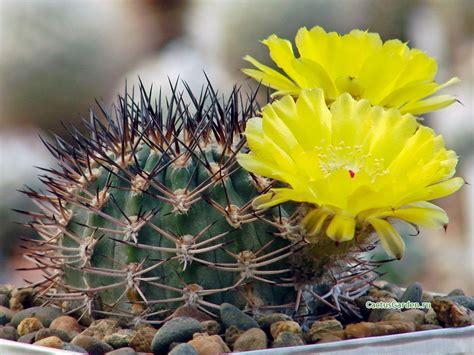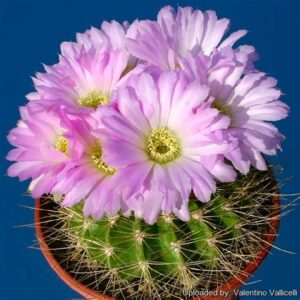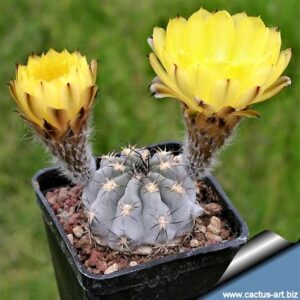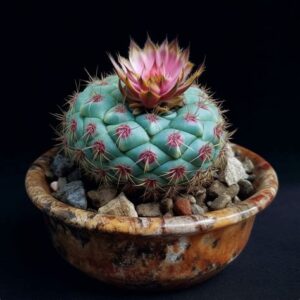As cacti continue to captivate the hearts of both horticulturists and casual plant enthusiasts, understanding the more nuanced relationships within the Cactaceae family becomes essential. In this exploration of Acanthocalycium through Echinocereus, we will delve into the characteristics, differences, and intricate connections between these two genera that signify the rich diversity of cacti. This examination will illuminate their distinct features and their shared attributes, shedding light on the evolutionary narratives that bind them.
Acanthocalycium, a genus originating from the arid regions of Argentina and parts of Bolivia, is known for its remarkable adaptations. At first glance, these cacti present with a stout, cylindrical form adorned with vibrant flowers that emerge from their areoles. The spines are often rigid and may exhibit striking colors, contributing to the ornamental allure of Acanthocalycium. Their habitat typically includes dry scrublands and rocky terrains, displaying their remarkable resilience and ability to thrive in conditions that would deter less hardy flora.
In contrast, Echinocereus encompasses a diverse array of species, commonly referred to as hedgehog cacti. These are primarily found in the southwestern United States and Mexico. The specific morphological traits of Echinocereus differ significantly from those of Acanthocalycium. Characterized by their typically shorter stature and an array of robust spines, their morphological variety ranges from globular to columnar shapes. Echinocereus cacti are renowned for producing spectacular blooms, often in stunning hues, which attracts pollinators and adds to their horticultural desirability.
The unifying theme between Acanthocalycium and Echinocereus lies in their adaptations to extreme environments. Both exhibit a camouflaging ability against predation and environmental stressors through the development of spines and unique pigmentation. However, the evolution of these two genera reveals deeper connections and divergences that celebrate their individuality while simultaneously connecting them in the broad tapestry of cacti evolution.
Understanding the differing adaptations and evolutionary pathways of Acanthocalycium and Echinocereus paves the way for further exploration into their ecological roles, cultivation preferences, and distinctive features.
Exploring the Ecological Roles and Habitats
Acanthocalycium species are quintessential cacti, displaying resilience in the face of drought and extreme temperatures. They possess an impressive drought tolerance, allowing them to conserve water efficiently. This is primarily achieved through a combination of their waxy skin, which diminishes water loss, and their ability to undergo CAM (crassulacean acid metabolism) photosynthesis—a mechanism that enables them to photosynthesize during the cooler, night hours to limit transpiration. Such adaptations render them ecologically significant in their native habitats, where competition for water is intense among flora.
Conversely, Echinocereus species are often located in diverse ecosystems, ranging from rocky outcrops to sandy deserts. They tend to form colonies and can occupy various ecological niches, thriving particularly well in well-drained soils. The hedgehog cactus is a keystone species, contributing significantly to the soil stabilization and providing habitat and forage for native wildlife. Their flowers bloom in the spring, drawing a myriad of pollinators, including bees and hummingbirds, which aids in the reproductive success of the species. This reciprocal relationship with native fauna highlights the ecological importance of Echinocereus species within their ecosystems.
The Divergence in Appearance and Structure
Examining the unique structural features further illustrates the differences between Acanthocalycium and Echinocereus. Acanthocalycium cacti typically display a stronger emphasis on pronounced tubercles, with their floral structures emerging from the apex of the plant. This is a distinctive trait that allows for a striking visual display when in bloom. Additionally, they exhibit a variety of coloration ranging from green to deep red, while their spines can also vary dramatically in size and color, enhancing their ornamental appeal.
Echinocereus, on the other hand, is characterized by its ribbed structure, allowing for greater surface area to expand and contract during hydration and dehydration processes. The flower formation in Echinocereus is also noteworthy, with blooms emerging from the sides of the plant, sometimes enveloping the entire surface in vivid colors. This structural difference not only influences water retention strategies but also provides a unique aesthetic balance between the two genera.
Assessing Cultivation and Horticultural Practices
Cultivating Acanthocalycium can often require specific attention to soil composition and water management. As these cacti prefer well-draining soils, sand-based mixes enriched with organic matter are optimal. During warmer months, it is pivotal to water them thoroughly, but care must be taken to ensure that they dry out completely before the next watering. Regular exposure to sunlight is critical, as lack of sufficient light can inhibit flowering and lead to spindly growth.
On the other hand, Echinocereus might prove to be slightly more forgiving in cultivation due to their adaptability to varying conditions. They do well in deep pots, allowing room for root expansion, and prefer a similar sandy, well-draining soil. However, Echinocereus thrives best in conditions that mimic their natural habitats—full sun with well-defined dry periods. Propagation can be achieved through seeds or offsets, with both methods providing opportunities for enthusiasts to expand their collections.
Cultivators should also consider the climatic conditions when growing these two genera, as extremes of heat and cold can affect their overall health. While Acanthocalycium does not tolerate frost, select Echinocereus species possess a remarkable cold hardiness, making them suitable for regions with cooler winter temperatures.
The Significance of Genetic and Taxonomical Connections
The fascinating genetic bonds between Acanthocalycium and Echinocereus unveil tales of diversification and adaptation in response to environmental pressures over millennia. Molecular studies have begun to elucidate the phylogenetic ties linking these genera, revealing how various environmental factors may have shaped their evolutionary histories. Such research offers insights into their potential shared ancestry and unique differentiation processes that occurred as they adapted to their respective habitats.
The taxonomical classifications within the cactus family are continually evolving, leading to interesting re-evaluations of existing classifications. It remains vital to maintain an up-to-date understanding of these relationships to ensure effective conservation efforts and future research direction. Such endeavors can highlight the necessity to preserve the biodiversity within the Cactaceae family, as these genera face growing environmental threats and habitat loss.
In summary, the examination of Acanthocalycium through Echinocereus reveals a compelling narrative within the diverse world of cacti. By acknowledging their distinct ecological roles, structural differences, cultivation practices, and genetic connections, one can appreciate the intricate tapestry that contributes to their uniqueness and beauty. As both enthusiasts and conservationists, understanding these relationships allows for better stewardship of these remarkable plants and their habitats.





Leave a Comment